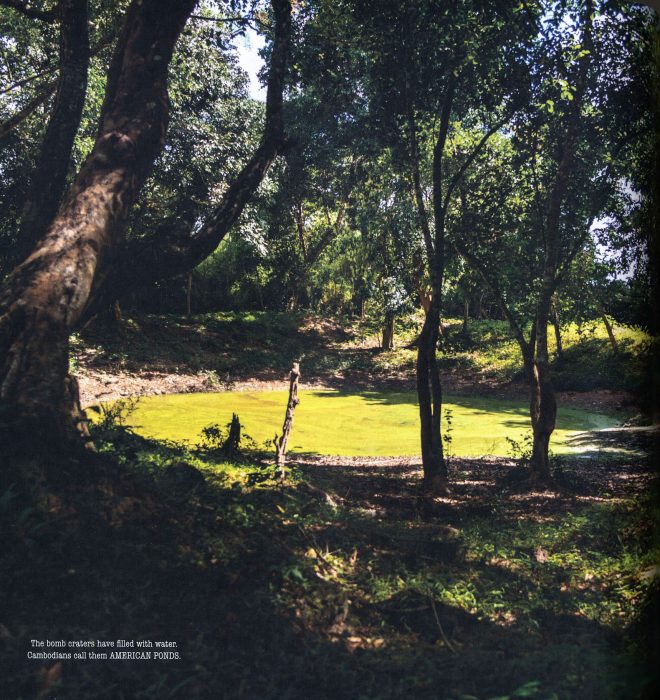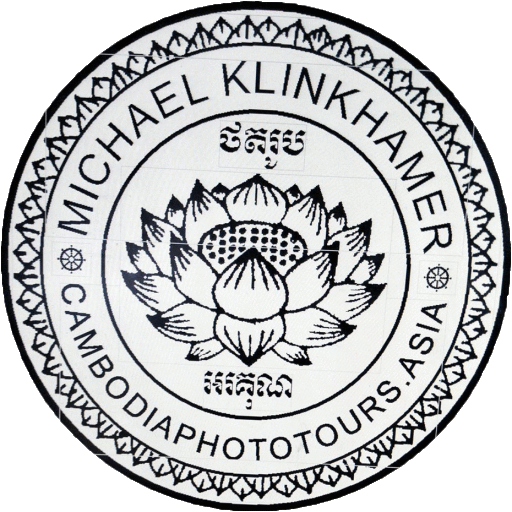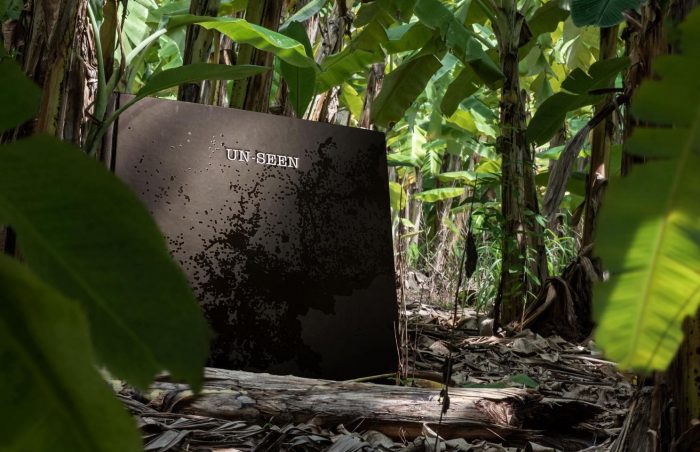
Text by Michael Klinkhamer.
UN-SEEN is a gripping documentary photobook by Elly Valk that shows us the close encounter of a Dutch sociologist and photographer with a common rural Cambodian family.
Like so many Khmers, they are still living with the wounds and scars of the past wars.
“Living in a war zone for 30 years.
Impossible to forget- Hard to remember-Important to share.”
Travel brings people from different cultures in close contact with each other, people say. Finding new connections, making new friends and eventually telling amazing stories are part of the deeper experience. And that is exactly what Valk has done with Unseen.
Her observational introvert mature personality allows for an in-depth connection with her subject matter. Together with her honest curiosity and desire to understand what happened and to share how people go through such hard times. One step after the other.
Cambodia? The Killing fields and Angkor Wat, friendly people, and yes, the Khmer Rouge. Only fair not to know or remember.
UnSeen is a personal account of what happened to the Cambodian Nget family.
When I meet Elly Valk in her Amsterdam apartment Cambodia seems light years away. The Dutch skies are gray and Amsterdam is eerie empty during the current Covid-19 lockdown and it’s bitter cold. The last time we met was early 2020 in a vibrant, hot, and steamy happening Phnom Penh.
Elly offers me right before we start our conversation a freshly printed copy of her recently self-published photo book. Wrapped with a visual strong-looking photo paper bookmarker flap around it.

A part from a black and white portrait of Mr.Vann is looking obviously shaken through his fingers directly at you. A full black matte hardback cover shell with sophisticated embossed words in white capitals read: UN-SEEN.
The content of the UN-SEEN book reveals itself gradually in carefully curated photographs and contains an easy-to-follow chronological timeline of the years 1970 until 1999. Starting from the second book chapter called; Living in a War Zone for 30 years.’
Unseen are thirty years of warfare, bloodshed, grief and fear leaving a huge silent gap between the past and the future of the common Khmer.
Elly Valk explains during our talk that she was gradually drawn into something so big, so cruel, and unimaginably hard to understand that it took her two years and several trips back to Cambodia to dig deeper, unravel, and get bit by bit closer to the truth.
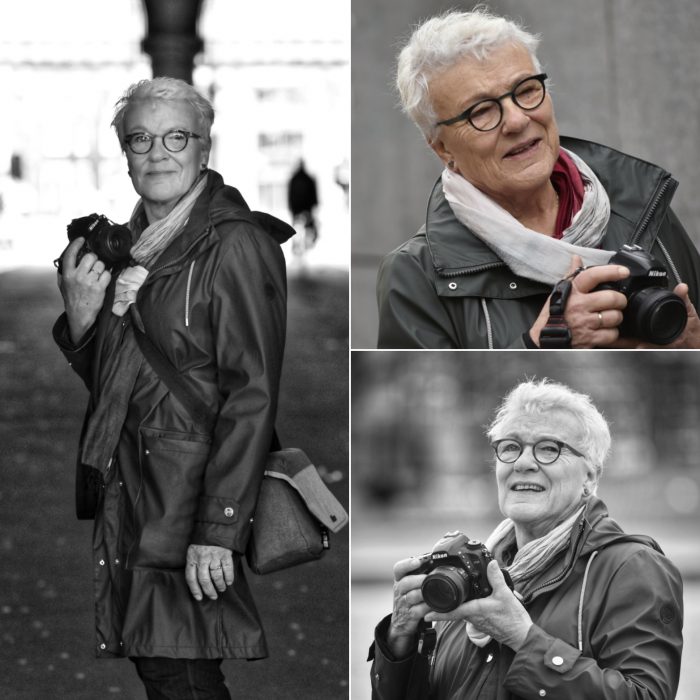
Photos by Michael Klinkhamer
Tell me, how did you get involved in this hidden subject matter?
“I typify myself as a sociologist in the first place and photographer secondary, in that strict career order. I have always worked with people and still do. As such I am also a photographer in which I use my people’s skills.”
I feel that I am almost invisible when I am around people. I can stand in the middle of a crowded market but won’t be noticed much. I can listen to people in a room and won’t be noticed also. People don’t get easily offended by my silent presence.
I always keep my guard and don’t get in your face with my lens. Never!
To open a story it has to reveal itself. Whether that is in a conversation or about an event from the past. You can’t force it.
When I sense hesitation or there is a withdrawal I am quickly done. Also when there is no real connection and that can be a personal choice, and for me a proven professional choice to step back, I will walk away in silence. Not pushing the situation is my way.
I love people but I am not a people’s person.”
My motivation for this book was to capture what lies beneath.
Beyond seeing, hearing, knowing, and not knowing but is nevertheless present in every fiber of your being and also at the heart of the Cambodian society.”
Elly explains that the first encounter with the leading person of her book Mr.Vann Nget, a Cambodian tuk-tuk driver was a pure coincidence, after a boat ride from Vietnam into Phnom Penh.
Vann was waiting for them at the harbor quay.
(A tuk-tuk is a two-wheel carriage pulled by a motorbike. A comfortable and practical taxi couch on two wheels.)
“Vann is a nice person, friendly, and he spoke good English and we decided to hire him for a city tour of Phnom Penh, including the mass graves from the Khmer Rouge period, the Killing Fields, etc.
We got along real fine and we had some drinks and food after the tour with him and he told us more or less out of the blue about this US bombardments that happened at his provincial village 120 km from Phnom Penh in 1970.
Without a warning, Mr. Vann confronted me with his personal life story.
And particular bout one of the U.S. carpet-bombings and the air raid that killed five of his siblings 50 years ago, when he was just 10 a days old baby.
Vann’s story eventually pulled me in with all that I am. As a mother, sociologist, coach, and social photographer.
His fragmented story also confronted me with my biased views and lack of understanding of what has happened in Cambodia. Knowing only that Cambodia was somehow involved in the Vietnam war. The real extent of what took place there was out of my sight.
Vann’s story touched my heart and triggered my mind to dive into the history and recent wars of Cambodia.
Vann is one of the persons who fully embodies the collective trauma and horror that the Cambodian nation went through.
I was not aware of the scope of those bombardments and my mouth fell open when Vann was telling his family’s true story and the killing of his five siblings during the US air raid and three other dead family members during the war years.
Of course, I did protest against the Vietnam War in the late sixties but at the time Cambodia was nothing more than a sideshow at least for us in the west and the media.
After all the real war was happening in Vietnam, we knew some about the B-52 carpet bombings and Agent Orange spraying of the jungles of Vietnam but Cambodia was a secret operation and out of sight. Same with the war in Laos.
Those war images that we had from those days came with the national daily TV news at 8pm and war pictures in magazines and particularly the photo of the horrifically burned napalm girl running naked on a road was widely published but that was all we saw and heard about Vietnam.
When you first arrive in Cambodia you are easily overwhelmed with the Khmer Rouge atrocities and horror. Not so much about what happened before, and after, and why. The killing fields and the S-21 torture museum are one of the main tourist attractions in Cambodia. It’s in your face all the time.
So that first meeting with Vann in 2012 got me thinking and contemplating at first. We stayed in contact with Vann for two years and I advised and helped him with his tourist touring business where I could, and when I returned with my husband to Cambodia we explored almost every corner of Cambodia together with him.
Vann became our local contact and we visited eventually someday his village and also met with the rest of his extended family.
During my first visit near his village and at their farmyard, he showed us the war affected places and the huge bomb craters littered all over the countryside, now filled up with water and around 3 meters deep.”
From the aerial picture, you can see that the whole landscaped has been methodically destroyed and each hole is a scar.
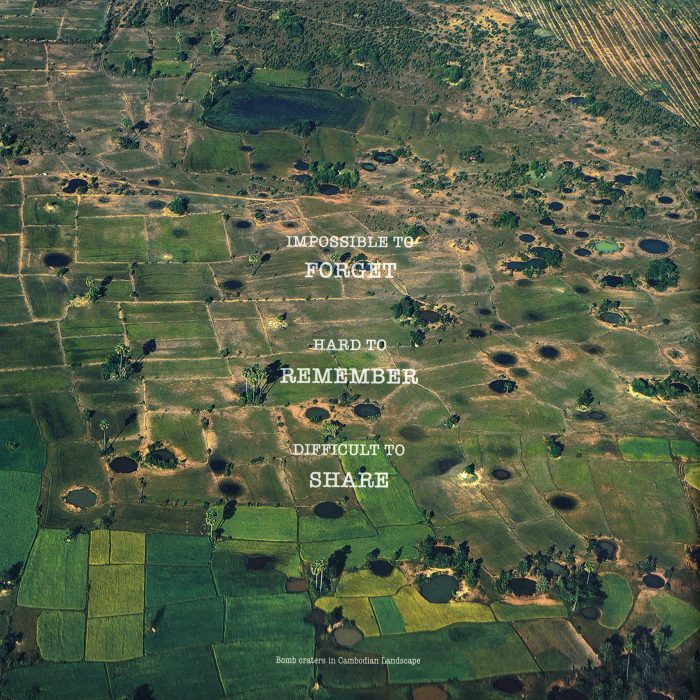
“Before the war, Vann s family worked hard and were successful farmers.
Their father cleared the jungle and planted, rice, banana, and other crops and they were a well-off rural Cambodian family.
This was during the early sixties when Cambodia was at the height of its newfound independence in 1953 and life was peaceful and good for them.
This all changed dramatically during the intensifying of the neighboring Vietnam war and the closer reality of the Viet Cong and the presence of the Ho Chi Minh trail, that became the main target for the US to destroy and enemy troops hiding and building up supplies and weapons within Cambodia.
Preparing for the worst.
Vann’s father was absolutely not naïve and fully aware of the situation and decided to build underground shelters in case of emergency.
His preparations against an enemy attack proved to be not adequate against the heavy and merciless bombardments and dropped cluster bombs and napalm of the U.S. military who were officially not at war with Cambodia.”
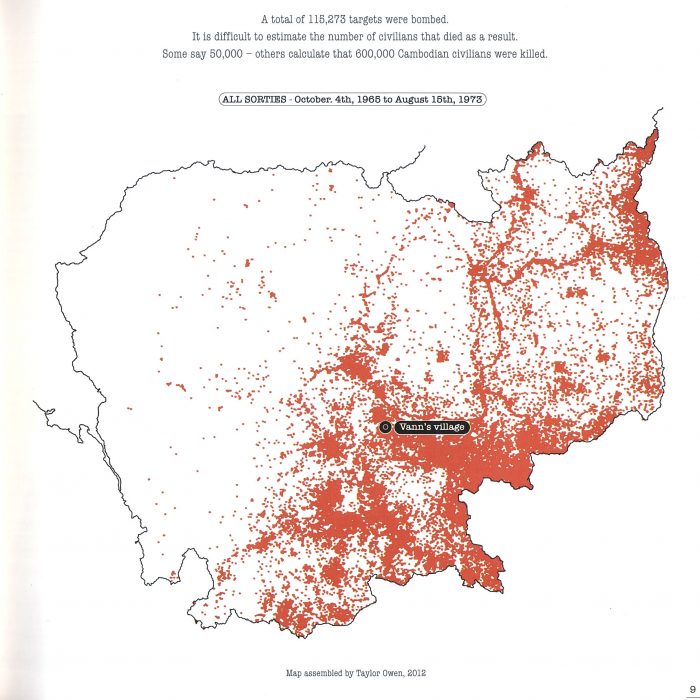
The bombing of Cambodia was part of Nixon’s “madman theory” that was meant to intimidate North Vietnam by showing that he was a dangerous leader capable of anything. The U.S. was motivated by the desire to buy time for its withdrawal from Southeast Asia, to protect its ally in South Vietnam, and to prevent the spread of communism to Cambodia.
American and both South and North Vietnamese forces directly participated (at one time or another) in the fighting.
The bombing raid on Vann’s family occurred on 13 January 1970, now 51 years ago.
The US bombing of the countryside increased from 1970 until 1973 when Congress imposed a halt. Nearly half of the 540,000 tons of bombs fell in the last six months. From the ashes of rural Cambodia rose a Communist Party of Kampuchea (CPK) regime, led by Pol Pot. It went on to kill or starve to death almost two million Cambodians from 1975 to 1979.
How did you get your story and facts together for this photo book?
“Vann’s family horror story and the upheaval it brought to him and his family is literally beyond words and unimaginable for us to grasp.
He told me just a small part of life’s story but I noticed that he was totally silent about it with his own family, it is something not spoken about really.
That silence is also because of the Buddhist religion and the Cambodian attitude towards acceptance. Life in the present time and pray for good luck is a big part of their culture. That is one of the treasures about Cambodia and the people you will get to understand after a while living there.
“At some stage of our travels, I was at the family home of Vann in the province of Kampong Cham and I was invited into the kitchen. Within the woman’s domain, so to speak. The old and fragile mother fully opened up to me then about what happened and gave me the full and her personal account of the tragedy.
That was a very emotional moment and made it instantly clear to me what I wanted to reveal without knowing how to proceed without pictures or other documentation from that long time ago available.
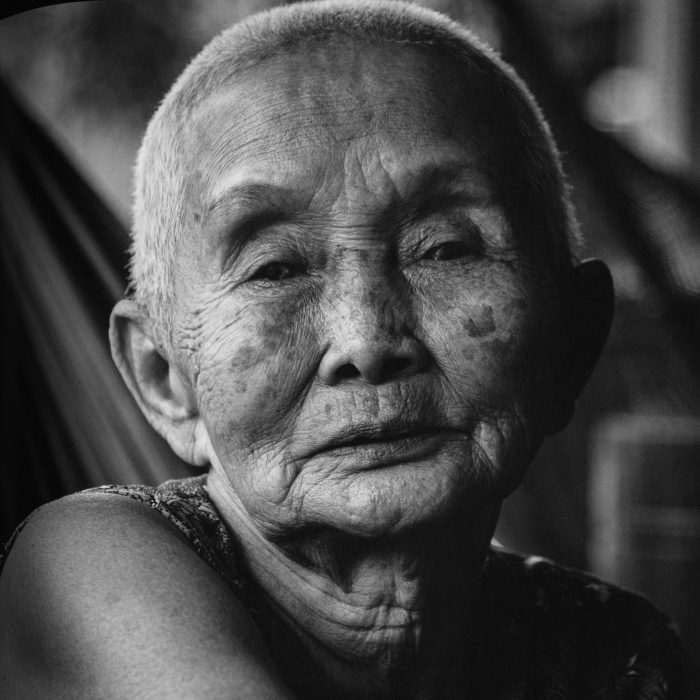
“Vann also now started to understand my deep hidden desire to reveal all, and by doing so we would also could perhaps commemorate the tragedy at some stage.
Once I presented him with my first sample of the book in progress he started to talk more and he allowed me more and more in. He shared all the details and background memories of his own childhood under Khmer Rouge and later under Vietnamese rule.
As young boy he should have been able to be carefree and learn and play with happy friends.
At the age of ten he had his first days in school. Before that time there was only war, death and misery and surviving from the Khmer Rouge killings and hard labour death camps.
“So for me, a European ‘foreigner lady’ in their eyes to fully understand the situation told by him in an almost aplomb manner was hard to swallow.
It came from him with certain hardened distance and perhaps too often told narrative meant for strangers as part of “entertainment” during his daily work as a tuk tuk driver in Phnom Penh.
After returning home in 2018 and looking at my first images attempt in gathering the story and stitching the pieces together became a real process.
When I looked at my pictures of Vann for example, I felt he was not fully there, he was somewhere else, gone, retracted. A very traumatized man. He only started to fully realize some of what had happened when he was nine years old.
In order make this into a clear, meaningful and or outsiders like myself understandable story was a true challenge for me.
Once I spread out my pictures out on the floor and was confronted with a load of fragmented observations and some historic facts interwoven with Vann’s own life experiences it was like I was looking at a 10.0000 pieces jigsaw puzzle at first.
So, I went back to Cambodia again in 2019 this time with a basic outline idea and the first rough edit of a book and, wanted to try to add perhaps more clarity and more real substance to Vann’s story.
One day I was presented with valuable additions and answers from his 19 years older brother, a wholesale rice seller in Phnom Penh. At first Vann was trying to leave his older brother out of this but I knew he was 19 year old at the time older and he had first hand recollection of the tragic day of the bombardment and what went on.
Vann’s older brother was immediately interested to talk to me and became so emotional that I was astonished to hear the story from a then young man’s perspective.
That gave my story much more substance.”
That fateful day he remembers that he saw the bombs drop and explode from a distance.
He then somewhat later understood it was their family home and farm that got hit and killed young children.
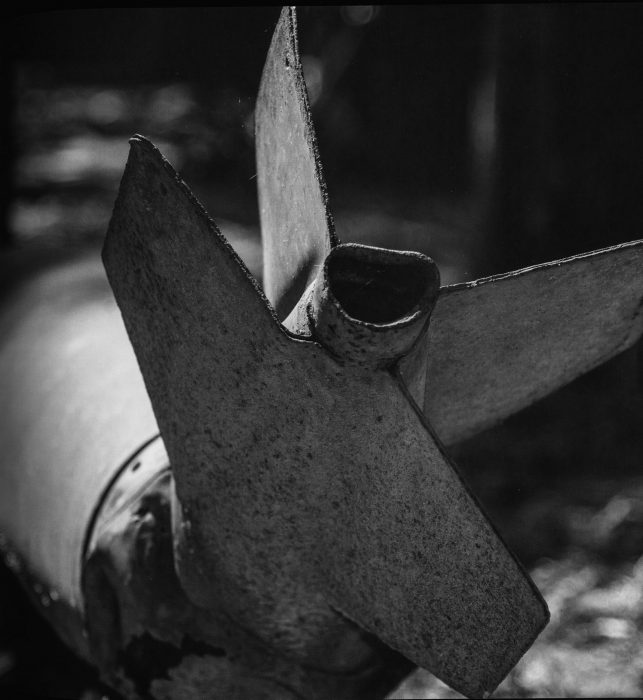
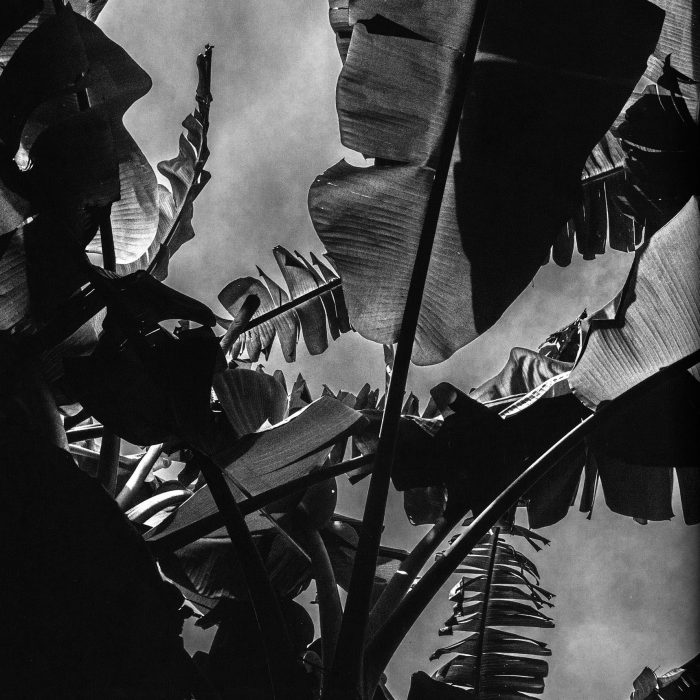
They decided to leave their dangerous deadly, burned and destroyed toxic home and land behind and became refugees. After a long and hazardous journey the settled down near Angkor Wat in Siem Reap province like so many others who were displaced in Cambodia between 1970-1979.
Eventually, they returned and picked up what was left on their own land but, never to live in the exact place where the five children were killed.”
Unseen is a photographic ‘contradictio in terminis’ since photographers are mostly busy to show things that happen now.
“After I was invited to talk to the older brother of the family also the older sister had her story to tell. She called up for me to come to the village again. So we went back there and she brought also her grown children and other family members.
At some stage, the house was full and people were sharing their hidden experiences and they found collectively some comfort to hear about their shared past. A better understanding grew about those years of darkness for the first time was my feeling.”
Just to hear and see them talking and sharing emotions and grief as a family was the best thing that could have happened.
Unfortunately, my Khmer language is very, very limited so I could not fully participate but it all had the sense of communal healing in the process. And yes, there was also laughter, joy and good food and drinks. That is always fully immersed with the Cambodian way of life.
UN-SEEN is not only a metaphor title about the main character Mr. Vann and how he deals with his past personally.
The final getting together with Vann’s family alone could have been the greatest reward for me of the whole Unseen experience. And now I am excited to release the final book.
UU-SEEN is planned to be also available in Khmer language and was to be part of several educational programs and exhibitions in Cambodia and Thailand. Unfortunately Covid-19 has put a hold on all of that for now. In Holland there is not much demand for topics like this right now, but you never know.
“With my slow and patient approach, a noticed that I unraveled things and that the Vann family had suppressed for decades and now it all came back to the surface. This was unintentional at first from me but I felt it was an amazing process to be part of.”
We did not see it, we couldn’t see it. It was a secret military operation. The time has dried up the tears and spilled blood and my photographs show the present moments and how life has resumed.
There is hard work ahead and a new future ahead for the young Cambodian generation amongst the deep scars within the older people and the destroyed landscape around them.”
By making UN-SEEN Elly Valk was forced to look back and beyond and above and tried to transcend a sense of what happened 50 years ago. How it affected this family and so many others in Cambodia until today.
